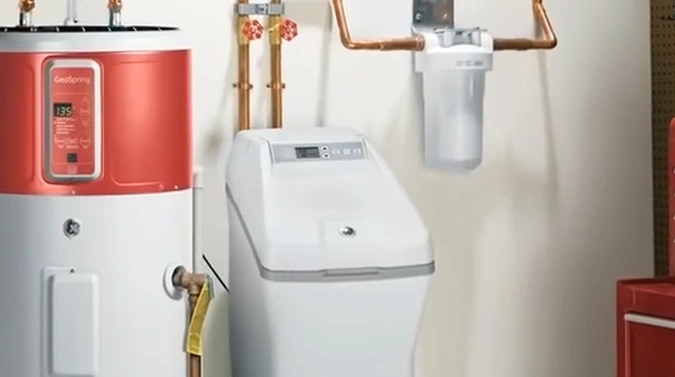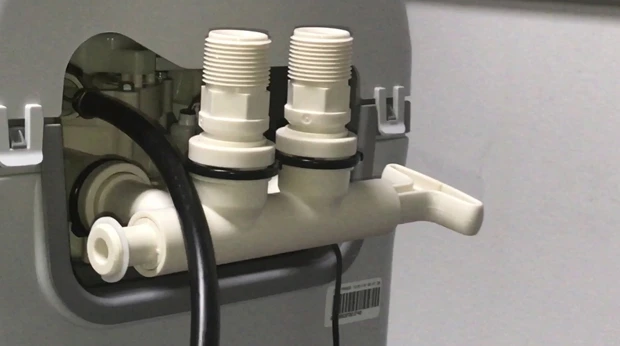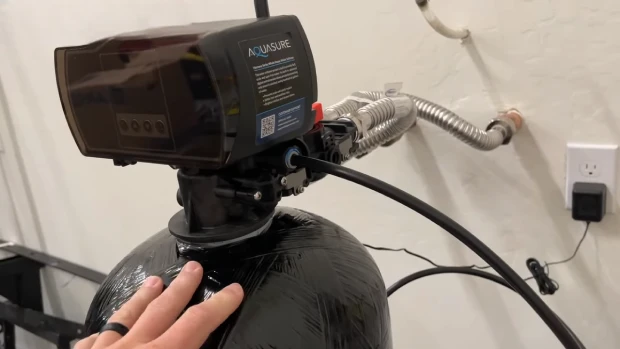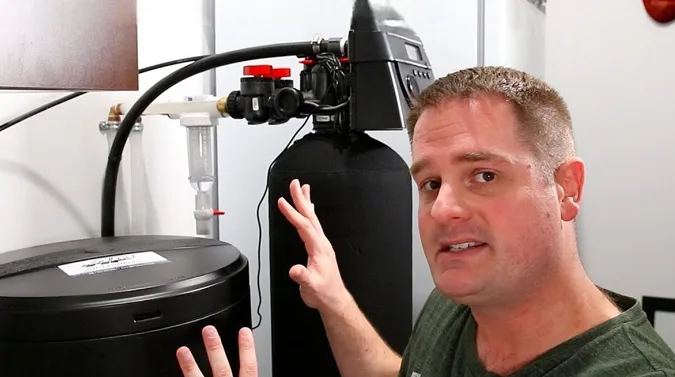Last Updated on May 16, 2023
Water softeners are an essential component of many households’ plumbing systems. They help remove minerals like calcium and magnesium that can cause scale buildup in pipes and fixtures and leave unsightly stains on clothes and dishes.
But, simply installing a water softener is insufficient to ensure optimal performance. The mixing valve must also be adjusted correctly.
Adjusting the mixing valve for a water softener involves finding the right balance between softened and hard water.
Generally, turning the valve counter-clockwise will increase the amount of hardness in the water, while turning it clockwise will decrease the amount. Let’s look at how to adjust the valve to get the right mix of soft and hard water.
Steps on How to Adjust a Mixing Valve for a Water Softener

Learn how to properly adjust a mixing valve for your water softener with these clear and concise steps.
Step 1: Locate the Mixing Valve
The first step in the process of adjusting the water softening system involves identifying the specific location of the device responsible for regulating the flow rate of two separate fluids. This device is known as a mixing valve and is an essential component in controlling the water hardness level entering your home.
The water softener mixing valve is typically located on the back of the water softener control head or the bypass valve assembly.
Step 2: Twist the Mixing Valve
Modifying the hardness level of your water requires a simple twist of a small component. Turning up the mixing valve is a simple procedure that requires only a few moments of your time.
When you turn the valve counter-clockwise, the hardness of the water will be increased, and when you turn it clockwise, the amount will be decreased. Be sure to test the water hardness level in your home after each adjustment.
What position should my water softener mixing valve be in?
The position of your water softener mixing valve will depend on the hardness level of your water. The hardness level of water is determined by the number of dissolved minerals, particularly calcium and magnesium, present in the water.
Soft water is defined as anything with a concentration below 75 mg/L. Generally, the water hardness should not exceed 120 to 170 mg/L, which is approximately 7-10 grains per gallon.
The exact amount you need to twist your water softener’s mixing valve will depend on the specific system you have installed. Typically, the valve will have a dial or lever that you can adjust to control the water flow rate.
Your water may need to be set so that a slightly higher flow rate of untreated water can mix with the treated water if it is moderately hard (between 76 and 150 mg/L).
If your water is hard (between 151 and 300 mg/L) or very hard (above 300 mg/L), you may need to allow a much higher flow rate of untreated water to mix with the treated water to achieve the desired level of hardness.
How do I know if my water softener is set correctly?

Ensuring the correct settings of a water softener system is crucial for maintaining optimal water quality and protecting plumbing fixtures from damage caused by scale buildup.
One way to know if your water softener is set correctly is by testing the hardness of your water before and after installation. Hardness can be measured using a test kit, which can be purchased at most hardware or home improvement stores.
Also, checking the flow rate of softened water can also help determine if your unit is working efficiently.
Another way to verify that your water softener is working properly is by monitoring the amount of salt used during regeneration. If you notice that the system has stopped using salt or is using too much, it may indicate a problem with the valve settings or other components.
How do you find a good quality water softener valve if the old one malfunctions?
Consider these things when looking for a top-notch water softener valve: size, material, durability, flow rate, and pressure rating. Reviews and advice from reliable sources are your best friends to help you make an informed choice.
Lucky for you, we’ve already researched some of the top rated water softener valves out there, and our review is waiting for you. A great valve means softer, cleaner water and a longer-lasting water-softening system.
What happens when water is too soft?
You can’t fully rinse the soap off if the water is too soft. Rinsing doesn’t make your skin or hair feel fresh and clean. Water can have a flat taste or a sweet taste.
When water is too soft, it can cause corrosion of pipes and appliances due to the lack of minerals present in the water.
Excessively softened water with less than 1 grain per gallon of hardness can be corrosive. This is because soft water lacks the necessary minerals that act as buffers, preventing corrosion from taking place.
Softened water may contain high levels of sodium, which can negatively affect people with high blood pressure or heart disease. Also, soft water has been linked to increased risk for certain types of cancer, such as bladder cancer.
How often is water softener tested?

The water softener should be tested every 2-3 months to ensure that it properly functions and provides high-quality soft water. The brine tank should be checked during this time frame to ensure sufficient salt levels.
If the salt levels are low, adding more evaporated salt pellets or cubes is necessary to maintain the quality of the water.
It makes sure hard water minerals aren’t building up in pipes and damaging water-using appliances, like dishwashers and washing machines.
Also, regular testing helps to prolong the lifespan of the water softener itself, reducing the need for costly repairs or replacements.
What are the signs my water softener is working correctly?
To determine if your water softener is functioning correctly, perform a simple test to gauge its lathering ability. Begin by mixing water and soap in a bucket, and stir vigorously. If the resulting bubbles are plentiful, your water softener is working effectively.
But, if you observe few or no bubbles, it is a clear sign that your water softener is not functioning as intended. In this case, professional intervention may be necessary to restore your equipment to optimal working conditions.
Importantly, regular maintenance and testing can ensure that your water softener continues to operate efficiently, preventing mineral buildup and related problems.
How long does it take to run water after installing water softener?

After installing a water softener, the softened water should become noticeable within approximately 48 hours.
The cold water should be soft immediately, but the hot water tank will still be filled with hard water, so it will take longer for the hot water to become soft.
You must first use the existing hard water to replace the hard water in your hot water tank with soft water. Therefore, running the hot water for a certain period after installing the water softener is essential to ensure the tank is empty of hard water.
The amount of time required to fully flush out the hard water in the hot water tank depends on the tank’s size and usage.
A small tank may only take a few cycles of hot water usage before it is fully flushed, while larger tanks may take several days to use. Running the hot water continuously for a few hours or cycling it on and off can help flush out the hard water more quickly.
Adjusting a Water Softener Mixing Valve: Precise and Crucial
In conclusion, adjusting the mixing valve of your water softener system is an essential process that ensures optimal performance. It helps to balance softened and hard water by removing minerals that can cause scale buildup in plumbing systems.
With the right tools and a bit of attention to detail, adjusting the mixing valve is a simple process that any homeowner can carry out.
Regularly adjusting the mixing valve will ensure that your water is always at the right hardness level, making your plumbing system work efficiently and effectively for a long time.


